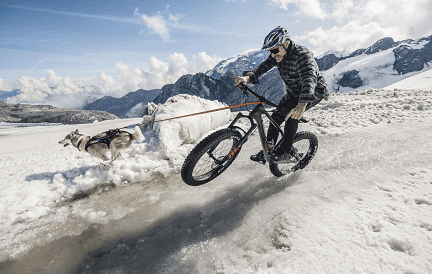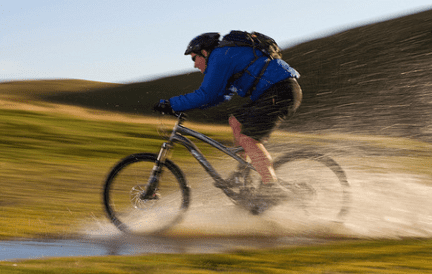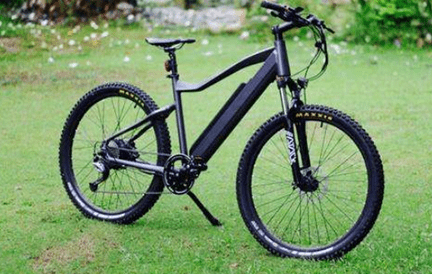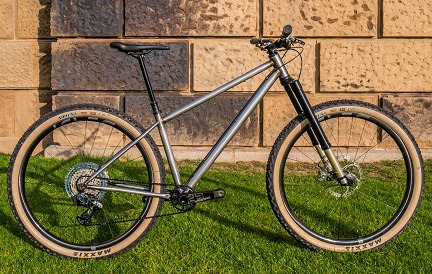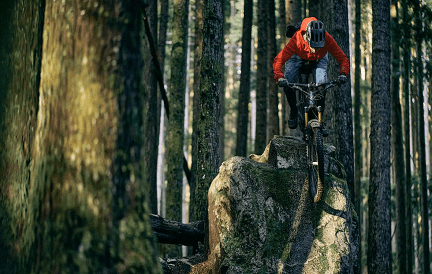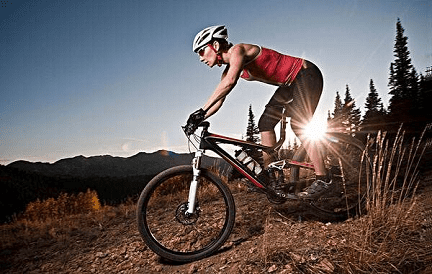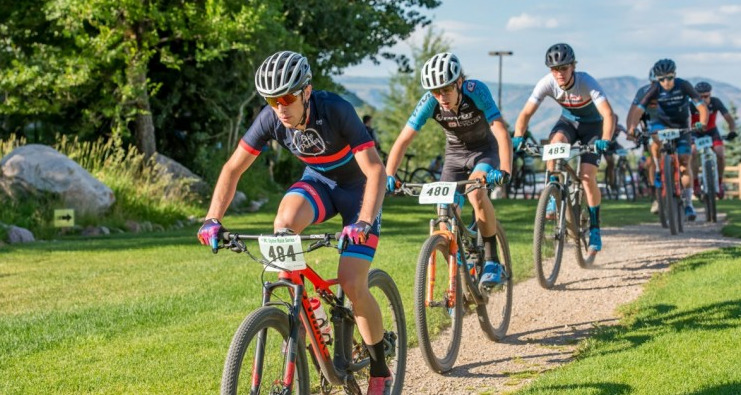
Introduction
Mountain bike racing is an exciting sport where riders compete against the clock or each other on off-road courses consisting of hills, rough terrain, jumps, and obstacles. Races take place on designated mountain bike trails or backcountry routes. Racing mountain bikes are specially designed for speed, durability, and handling over rugged landscapes. There are various disciplines, including cross country, downhill, enduro, and short track racing.
The thrill of racing mountain bikes comes from pushing your physical limits on climbs, mastering technical downhill sections at speed, competing head-to-head against others, and having the discipline to ride smoothly and efficiently over long distances. Mountain bike racing requires endurance, bike control skills, focus, strategy, and mental toughness. Riders experience an adrenaline rush when traversing rocky, steep trails and tackling obstacles during races. The sport provides excitement, personal accomplishment and communion with nature.
This article serves as a comprehensive guide about racing mountain bikes. It will cover the skills required, types of racing mountain bikes, essential gear, training and preparation tips, riding techniques, race formats, finding events, and how to get started in the sport. The goal is to provide useful advice for those interested in competing in mountain bike races and mastering all aspects of racing these capable off-road bicycles. Whether you are a beginner looking to start racing or a seasoned veteran, this guide will help take your mountain bike racing abilities to the next level.
Choosing the Right Racing Mountain Bike
Types of Mountain Bikes for Racing
Cross-Country (XC) Bikes: Cross-country racing mountain bikes are lightweight with suspension travel between 80-120mm. They excel at climbing and covering rough terrain efficiently. XC bikes have responsive handling for maneuvering tight turns and obstacles.
Downhill Bikes: Downhill racing mountain bikes are burly with 7-10 inches of suspension travel. They are optimized for high-speed stability and absorbing massive impacts when descending steep, aggressive terrain. These bikes have dual-crown forks and heavy duty components.
Enduro Bikes: Enduro racing mountain bikes strike a balance between XC and downhill. They have 150-170mm of suspension travel for descending, while still being efficient enough for short climbs between stages. Enduro bikes are designed for versatile all-mountain performance.
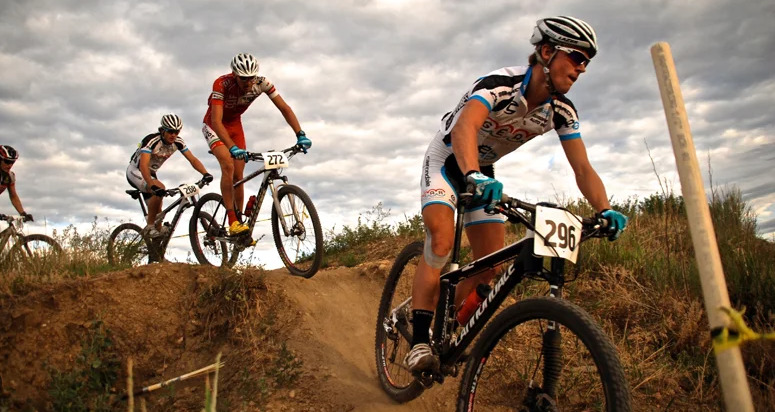
Frame Materials and Geometry
Racing mountain bike frames are typically made of aluminum, carbon fiber, or composite materials to optimize the weight-to-strength ratio. Geometry factors like wheelbase, head tube angle, and chainstay length are tailored based on racing discipline and terrain demands.
Suspension Systems
Dual suspension with front fork and rear shock absorbers is standard for absorbing bumps and maintaining control during racing. Suspension should have sufficient travel for your racing style, yet remain responsive and resistant to bobbing during hard pedaling efforts.
Wheel Size Considerations
Typical wheel sizes for racing mountain bikes are 27.5” and 29”. Larger 29” wheels roll over obstacles easier while smaller 27.5” wheels are more agile. Choose the size based on the handling and responsiveness best suited for your racing.
Budget Considerations
Aluminum alloy racing mountain bikes can be found between $1,500-$3,000, while carbon fiber bikes range from $3,000-$6,000. Invest in the best bike you can afford for your skill level and budget constraints. Quality matters for performance and safety during competitive events.
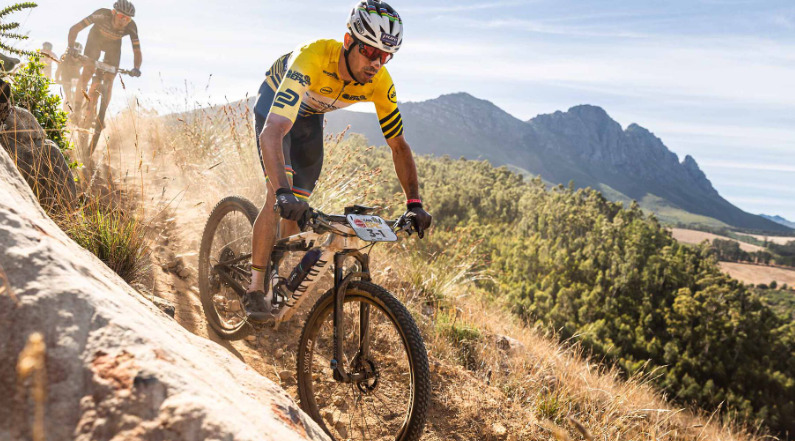
Racing Mountain Bike Essential Gear and Equipment
In addition to a competition-ready bike, racers need specialized gear for safety, performance and comfort.
| Category | Items | Description |
| Protective Gear | Helmet | Provides head protection and is required for all mountain bike races. Choose an option with proper ventilation and fit. |
| Gloves | Protect hands and improve grip on handlebars. Look for padded palms and durable materials. | |
| Body Armor | Optional extra protection including knee pads, elbow pads, and even full upper body armor for downhill racing. | |
| Clothing | Jersey & Shorts/Pants | Moisture-wicking and stretchy synthetic jerseys and shorts or pants suit the demands of racing. Match to weather conditions. |
| Footwear | Shoes | Clipless mountain biking shoes transfer power efficiently and keep feet secured to the pedals. |
| Tools & Accessories | Multi-tool, spare tube, mini pump | Carry a multi-tool, spare inner tube, mini pump and other essentials during races in case mechanical issues occur on the trail. |
| Hydration pack/bottle cages | Stay hydrated using a hydration backpack or water bottles in cages mounted on the bike frame. | |
| Cycling computer | Optional computers record speed, distance, cadence, power and other metrics to analyze performance. |
Preparing Yourself for Racing
Physical Fitness and Conditioning
| Type | Description |
| Strength Training | Develop leg, core and upper body strength for power and handling bikes on rough terrain. Use resistance bands, bodyweight exercises and free weights. |
| Cardiovascular Fitness | Build endurance and stamina by logging miles on the trails. Include high intensity interval training. |
| Flexibility & Mobility | Improve flexibility through yoga, pilates and stretching. Focus on hamstrings, hips and core for better bike handling. |
Mental Preparation
| Tactic | Method |
| Goal Setting | Set seasonal goals and individual targets for each race like finish time or position. |
| Visualization | Mentally rehearse racing on the course to preview challenges and build confidence. |
| Handling Pressure | Use breathing exercises, mantras and positivity to manage pre-race jitters and stay focused. |
Bike Maintenance and Tuning
| Area | Tips |
| Regular Maintenance | Clean bike, lube chain, check brake pads, inspect wear and tear on components. |
| Suspension Setup | Tune suspension for optimal sag, rebound and compression at race sites. |
| Tire Selection & Pressure | Choose tires suited for terrain. Set pressure for ideal traction and reducing flats. |

Mastering Racing Mountain Bike Riding Techniques
Expert skills are vital when racing over rugged backcountry trails. Climb efficiently in and out of the saddle to conserve energy.
Cornering
Smooth, speedy cornering is essential for competitive racing. Enter turns wide, look through the exit, and lean the bike while keeping your body low and centered. Shift weight forward and drive through the outside pedal to rail berms. Avoid braking in corners when possible. Practice picking fast lines for different curve shapes.
Descending
Use dynamic weight shifts and optimal braking to swiftly descend during races. Stay loose with bent elbows and knees to absorb bumps. Brake smoothly before entering corners. Push hips back and low on the bike through rough sections. Let the suspension compress naturally rather than fighting it. Build skill riding loose, off-camber or rocky terrain at speed.
Climbing
Climbing efficiency is crucial during cross-country and enduro racing. Stand to apply power on steep pitches. Maintain momentum by charging up short rollers. Shift gears smoothly to maintain cadence. Weave if the trail zigzags up switchbacks. Stay seated and spin on longer fire road climbs. Race smartly by not surging too soon or blowing all your energy.
Jumping and Drops
Practice controlled jumps and drops to be prepared for race courses. Scope lines and speed beforehand. Use proper take-off and landing techniques for safety. A pumping motion right before the lip helps generate lift for clearing gaps. Absorb landings with your arms and legs, keeping the bike’s rear wheel down. Progress slowly to build proper jumping skills.
Braking Techniques
Master quick, controlled braking to shed speed rapidly during steep descents when racing. Use both front and rear brakes with more power up front. Brake before, not during corners. Drag brakes lightly to stay in control through technical sections. Build finger strength and modulation for precise speed checks when needed.
Line Choice
Picking the optimal line is vital for your race time and safety. Assess options during prerides. Smooth lines that carry flow and speed are best. Avoid overly ambitious lines that push your limits. Be prepared to use an alternate if conditions change. Connecting smooth lines and avoiding braking maximizes momentum.
Racing Mountain Bike Strategies
There are various race formats when competing on your mountain bike. Cross-country races range from short tracks to marathon distances. Enduro combines transition stages with timed downhill runs. Downhill is all about speed on technical terrain. Understand each format and optimal strategies.
Proper pacing is essential for cross-country and enduro racing. Go out conservatively and avoid surging early. Save energy for technical sections. Maintain tempo on climbs. Push the pace when opportunity arises, like smooth descents. Finish strong by relying on your endurance.
Implement tactics to gain advantage during mountain bike races when appropriate. Use competitor battles to your benefit by passing both. Surge on an opponent’s weakness, like technical sections. Use downhill skills to gap on descents. Make a move on the final lap when others are fatigued.
When racing your mountain bike, carefully assess when and how to pass competitors. Call out or use a bell before passing. Choose smart lines to overtake smoothly. Pass before or after technical sections, using momentum. If racing downhill, only pass when completely clear. Be respectful and strategic when passing.
Hydration and fueling are critical during sustained mountain bike racing efforts. Drink regularly and eat on longer rides, like energy gels or bars. Time intake for demanding sections, like before big climbs. Manage electrolytes and energy levels. Stop if needed without losing focus. Avoid bonking through smart nutrition strategies.
Racing Mountain Bike Safety and Trail Etiquette
Trail Etiquette Guidelines
When racing your mountain bike, always follow proper trail etiquette and right-of-way protocol. Announce yourself and yield to other non-racers. Pass politely when clear. Do not cut switchbacks. Avoid skidding tires or aggressive braking that damages trails. Keep wheels on the designated course. Respect wildlife and the environment.
Environmental Responsibility
Be mindful of your impact on trails and nature when mountain bike racing. Stay on marked paths to prevent erosion shortcuts. Pack out all trash and belongings. Avoid excessive noise pollution. Consider supporting conservation efforts that protect biking access and ecosystems.
First Aid & Emergency Preparedness
Safety comes first when racing mountain bikes on remote terrain. Take a first aid course and carry supplies like bandages. Know how to assess and treat injuries. Understanding ways to signal for help if severely hurt can be lifesaving. Have an emergency plan for solo training rides in case you get stranded or lost. Always put safety ahead of your race result.
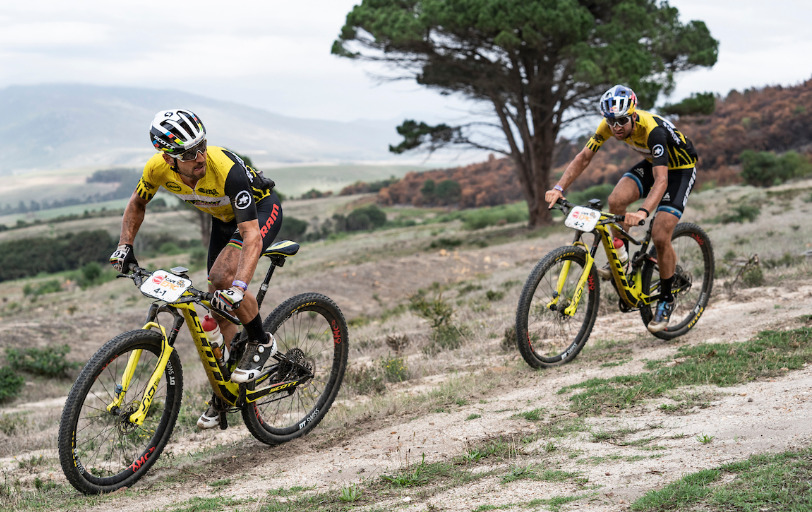
Joining Mountain Bike Racing Communities
Local Clubs and Groups
Joining a local mountain bike or cycling club is a great way to connect with fellow racing enthusiasts. Most areas have clubs that organize group rides, clinics, races and social events. Getting involved allows you to meet potential training partners, find mentors, and learn about local trails and competitions. Clubs also provide support resources for all ability levels.
Online Forums and Communities
There are many online communities for discussing and learning about mountain bike racing. Forum sites allow you to join group discussions or post questions to seasoned racers worldwide. Social media groups and channels offer another way to virtually engage with the community. Here you can find product reviews, training tips, race coverage and more.
Benefits of Networking
Being involved in mountain bike racing communities both locally and online provides invaluable benefits. You gain knowledge from experienced members and access to insider information. Sharing experiences, challenges and achievements creates motivation. Making connections leads to training partners and new friendships. The camaraderie and support improves your skills, fitness and enjoyment of racing mountain bikes.
Racing Mountain Bike Training and Improvement
Just like in any sport, the key to success is tailored training. Work on physical fitness through a structured program mixing biking, strength training, core exercises and stretching. Regularly practice handling skills, techniques and race simulations. Analyze performance after events to set improvement goals. Work on identified weaknesses while leveraging strengths. Monitor rest, recovery, nutrition and hydration. Consider working with coaches or taking skills clinics. The more you practice and prepare as a racer, the better you will perform.
Racing Mountain Bike Racing Events and Competitions
Mountain bike races range from local charity events to world-class pro circuits. Cross-country and marathon races test endurance on point to point backcountry courses. Short track loops offer fast racing on technical terrain. Enduro endurance races combine untimed transitions with timed downhill stages. Downhill tests raw speed and skills on steep, gnarly trails. Stage races consist of multiple events over several days. The UCI Mountain Bike World Cup and World Championships represent the highest levels. Search for competitions matching your interests, skill level, location and schedule.
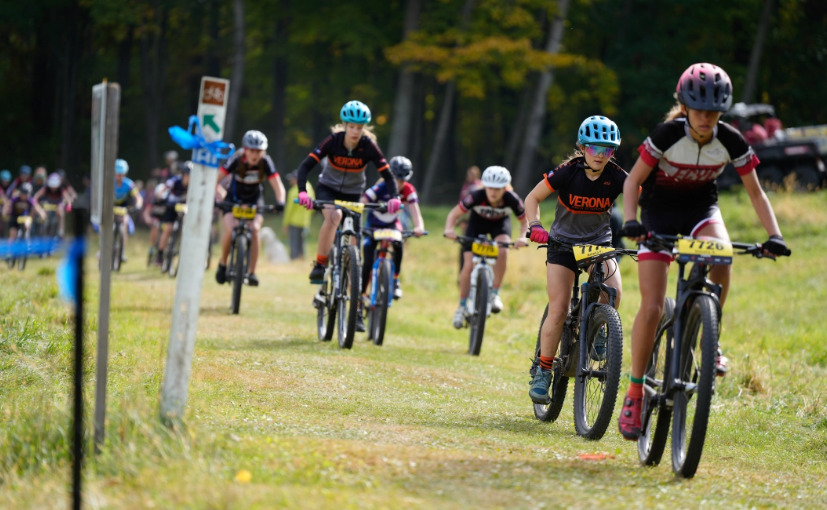
Conclusion
Mountain bike racing is an exciting way to test your speed, endurance and bike handling skills against the clock and other competitors on off-road courses. The sport provides a thrilling blend of physical exertion combined with the mastery of technical terrain and trails. Racing mountain bikes demands proper fitness, bike control skills, strategic thinking and mental toughness to overcome challenges.
With the advice provided in this guide, you can select the most suitable racing mountain bike, gear and equipment to meet your racing discipline and budget. Follow training, conditioning and skill development tips to prepare your body and mind. Study smart strategies and techniques for competing against rivals on race day. Always uphold safe practices and trail etiquette when racing your mountain bike.
By immersing yourself in the supportive mountain bike racing community, you will find inspiration and camaraderie. Continually work on your weaknesses and practice new skills to achieve improvement. With dedication and passion for the sport, you can experience the rush of competing in these adrenaline-filled races. The journey to master the art of racing mountain bikes ultimately leads to personal growth, achievement and unmatched fulfillment.
FAQs
Q: What types of mountain bike races are best for beginners?
A: Beginner-friendly races include short track cross-country, non-technical marathon cross-country, and team relay/charity races. Avoid highly technical downhill or enduro until skills improve.
Q: What safety gear is recommended for mountain bike racing?
A: Helmets are mandatory. Also use eyewear, gloves, knee/elbow pads for some disciplines. Check race rules for required gear.
Q: How can I get started competing in mountain bike racing events?
A: Start by joining a local mountain biking or racing club. Enter beginner categories in local/regional races. Seek advice from experienced racers. Progressively take on more challenging events as skills improve.
Q: What tactics should I use when racing mountain bikes?
A: Pace yourself, ride smoothly, stay focused, hydrate/fuel, use terrain to your advantage, know when to push your limits or be cautious, analyze competitors for smart passing, and finish strong.
Q: How often should I train for competitive mountain bike racing?
A: Aim for 3-5 rides per week, plus strength training 2-3 times per week. Take rest days and avoid overtraining. Train specifically for target races and individual needs.

